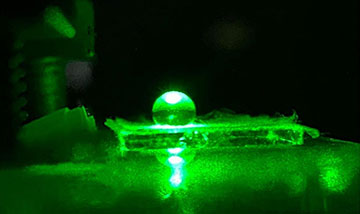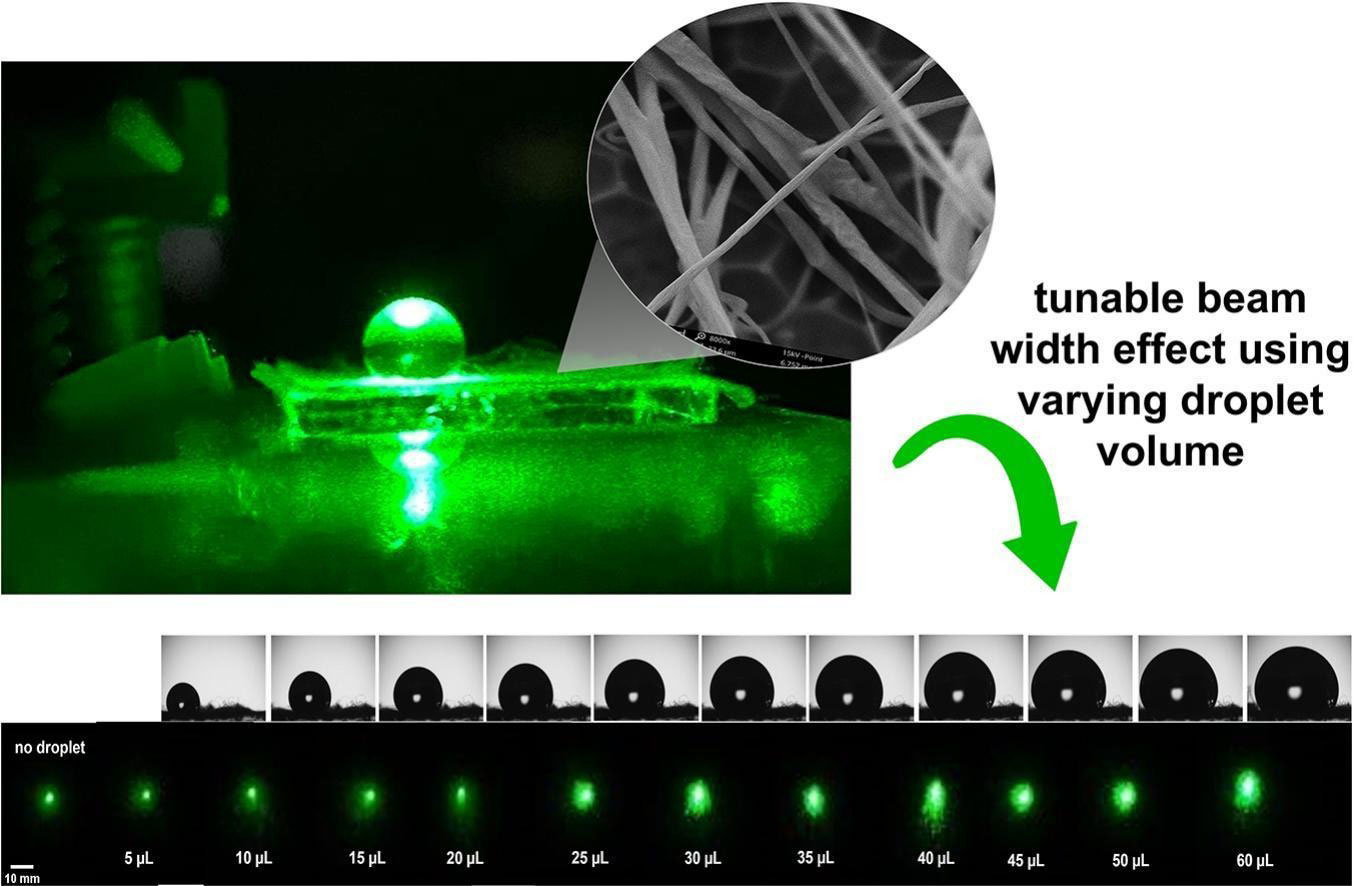
Researchers coated a glass slide with electrospun PVC fibers, making a hydrophobic surface that enables a water droplet to maintain its spherical shape and optical properties. [Image: Budlayan et al., 2025]
Variable focus lenses allow beam profiles in imaging systems to be varied without replacing the lens or other components. Liquid lenses, often using water, offer many possibilities for such tunable lens systems. However, mechanically adjusted liquid lenses consume a lot of power and wear out quickly, and many nonmechanical approaches, like microfluidic systems, are complex and costly.
Now, researchers in the Philippines have developed a simple, cost-effective tunable lens system by using a static water droplet as a variable liquid lens, taking advantage of the natural shapes and sizes of water droplets (Results Opt., doi:10.1016/j.rio.2025.100824). The team covered a glass slide with tiny plastic fibers to coax droplets to remain in a spherical shape, resembling that of a convex lens, instead of flattening out over the slide’s surface. Simply adjusting the volume of water inside the droplet changes its focal length.
Balancing a spherical droplet
Nonmechanical tunable lenses, which include most liquid lenses, are adjusted by changing the shape or surface profile of the lens through noncontact forces—electrically, thermally or optically, for example. Water is commonly used in such tunable lens systems because of its availability, stability and electrical tunability, as well as its high optical transmittance.
In the new work, scientists, based at Ateneo de Manila University, used a technique called electrospinning to create polyvinyl chloride (PVC) fibers on a substrate made of indium tin oxide glass. Electrospinning is a well-known technique that pits electrical force against gravity to stretch and dry polymer solutions into microscale or nanoscale threads.
The PVC threads used in the experiment were less than 3 μm in diameter and were oriented randomly on the glass surface. More fibers were deposited as the electrospinning time increased. The scientists measured the water contact angle of droplets on the glass before and after the PVC fiber deposition to confirm the fibers made the surface more hydrophobic—a larger angle indicated hydrophobic behavior.
The experimental setup consisted of a glass slide made hydrophobic by a coating of electrospun PVC microfibers (inset). The researchers were able to observe the effect of the water droplet’s volume on its optical properties, particularly its power of magnification. [Image: Budlayan et al., 2025]
During the experiments, the researchers shone the beam from a 543.5 nm green laser through water droplets as they sat on different versions of the glass substrate: without the polymer and with the PVC threads, deposited in layers of different thickness. The angle increased as more fibers were deposited up to a limit of seven minutes, after which there was no change in the water contact angle. Larger quantities of PVC fibers on the glass reduced the substrate’s light transmittance, however, so the researchers found that three minutes’ worth of electrospinning turned out to be the right length.
Different diameters
The team experimented with water droplets of different volumes, up to 60 μL. They measured the beam spot diameter after the laser went through their lens, finding that the diameter increased after introducing the water droplet to the setup and continued to increase as the water droplet volume increased. The biggest change in the contact angle between the droplets and the glass happened between volumes of 5 and 10 μL, while the parameter did not change appreciably between 45 and 60 μL. The bigger the droplet, the longer the focal length of the droplet.
The researchers observed that the beam kept its Gaussian intensity characteristics, which indicates minimal diffraction. Furthermore, they noted that the beam width increased with increased water volume, which they say suggests that the droplet acts like a tunable convex lens that can defocus or magnify the beam. The researchers hope the low-cost liquid lenses will find multiple applications, from classrooms to laboratories, and perhaps in complex systems that require adjustable light beams.


